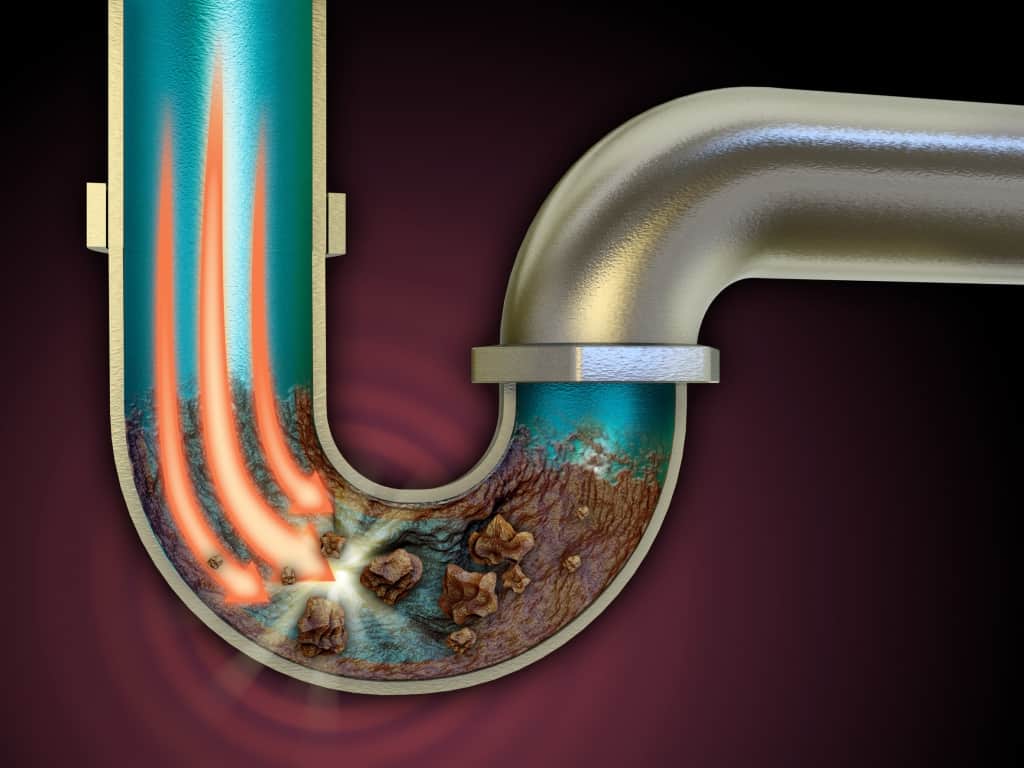Ending up with a clogged toilet for whatever reason is every person’s nightmare. We’ve all had to face this beast of a problem at least once, and that’s if you’re lucky.
Even though a clogged or slow-running toilet may feel like an emergency at the moment, it’s best not to use anything that may further upset your toilet plumbing.
Sure, Drano has a great line of products for unclogging drains and pipes, but will they save you from your emergency? Or will they only add to the forbidden soup that is brewing in your bathroom? Today, we’re here to answer these questions, as well as provide you with tips on how to deal with a clogged or slow-running toilet.
To get great tips on any other common toilet problem, you can head over to our article on common problems with toilets and how to easily fix them.
Can You Unclog a Toilet Using Drano?
Sadly, you can’t unclog a toilet using Drano. And we’re not just saying that — the official Drano website clearly states that Drano products won’t open a clogged toilet.
If you have frequent clogging or discharge problems with your toilet, your house’s plumbing may not be properly equipped. If that’s the case, you should consider having an upflush toilet installed. Upflush toilets include a grinding pump that can move the waste upwards. To find out if you really need an upflush toilet, you can read our article on when an upflush toilet is necessary.
Can You Use Drano in Your Toilet?
Even though using Drano products in an already clogged toilet is ineffective and you’re better off without them, there’s actually one Drano product you can use in a toilet — the Drano Max Build-Up Remover.
If you have a slow toilet, this product may help. Drano Max Build-Up Remover combines natural enzymes with microorganisms to break down toilet paper and other organic material that may be slowing down the water flow in your toilet. Pretty neat, right?
Is It Safe?
Besides Drano Max Build-Up Remover, no other Drano products are safe for use in the toilet, and Drano’s official website explicitly states this.
As for other clog removers on the market — well, they contain acidic chemicals. When an acidic chemical is combined with water, it produces heat, and over time, it may cause your pipes to melt and shrink, creating indentations inside the pipes.
How to Unclog Your Toilet
Lastly, it’s important to note that using any type of clog remover made for sinks is not recommended as it can damage your pipes and can cause further blockage. Instead of using clog removers, our advice is to unclog your toilet manually.
You’ll only need a plunger, gloves, and safety glasses. Here’s how you do it:
- Heat up the plunger under hot water to make the material moldable, so that it can create a vacuum seal;
- Put the plunger over the bowl and make sure to cover the hole at the bottom completely;
- Push lightly a few times first;
- Then push a few times harder to break up the waste material;
- Pull the plunger quickly but carefully.
Hopefully, that should do it. If not, you can repeat these steps until you get a result. However, some situations may require different solutions. If you want to learn more, you can read our simple guide to unclogging a toilet.
Conclusion
To sum everything we’ve covered so far, the answer to the question “Can you use Drano in a toilet?” is simply No. There are a few reasons for this:
- Drano Clog Removers are ineffective against the material buildup in your toilet. They won’t break down the organic material effectively.
- Toilets have a different type of plumbing system that features a trap configuration, which stops the remover from entering areas where buildup can happen.
- Although there is a Drano product you can use in a toilet, it will not be able to unclog one.
- Instead of using clog removers, you can try unclogging your toilet manually instead.









